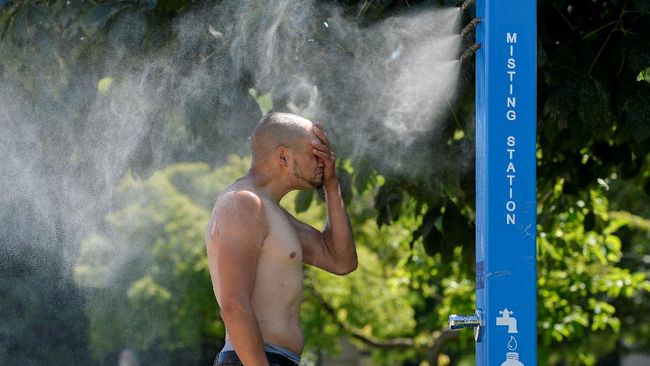Since last week, Canada has been facing a heat wave caused by extreme climate change.
Warm temperatures above the average limit have never occurred before in this North American country. As a result of this phenomenon, 230 people died in British Columbia (BC), Canada.
The community of Lytton, British Columbia, set a Canadian heat record on Monday for the second day in a row, until the start of summer. In some cases, 20 degrees Celsius is higher than normal temperature.
ADVERTISEMENT
SCROLL TO CONTINUE WITH CONTENT
“As a meteorologist, this is something I have never seen before,” said chief meteorologist Anthony Farnell, Tuesday (29/6).
“I think it cannot be denied that (this phenomenon) has something to do with climate change,” he added.
The abnormally hot weather has many people wondering if the heat wave is a one-off or if it may be linked to climate change.
Climatologists have always been cautious when trying to attribute specific extreme weather events to climate change – although the growing field of event attribution is starting to change that.
“Meteorologically, the current heat wave in the west is caused by a ‘heat dome,'” says Farnell.
A heat dome occurs when warm air from the sea is trapped in the atmosphere, making it appear closed.
“This is an area of high pressure extending into the atmosphere. In British Columbia, even at the top of the Rocky Mountains, temperatures are about 15 to 20 degrees above normal.” , added Farnell.
“So when you have a heat dome. This high-pressure system, a lot of air is trapped underneath and it gets warmer as it goes down toward the coast.”
Aside from that, the sun shines every day and creates bubbles so that air currents circulating in the atmosphere can only surround it.
This, Farnell continued, can prevent rain or cold fronts from arriving. A cold front is the boundary of a moving cold air mass, particularly the trailing edge of a warm sector of a low-pressure system.
Although thermal domes are not new, Farnell says the frequency and duration of the phenomenon may be linked to climate change.
Globally, the planet’s average annual temperature is one degree Celsius warmer than it was a century ago, according to the U.S. National Oceanic and Atmospheric Administration (NOAA).
From 2005 to 2014, the 10 hottest events were recorded, NOAA said.
It is possible that the world and Canada will face more extreme weather events together. This trend could be linked to climate change, climatologists have previously said.
“We are now in a climate where these types of extreme events are much more likely and much more severe,” said Noah Diffenbaugh, a climate scientist at Stanford University. Global News.
“And the current conditions in British Columbia, Oregon, Washington and Northern California are good examples of that.”

“Travel nerd. Social media evangelist. Zombie junkie. Total creator. Avid webaholic. Friend of animals everywhere. Future teen idol.”


:strip_icc():format(jpeg)/kly-media-production/medias/3387188/original/007486800_1614303448-banner__1_.jpg)



